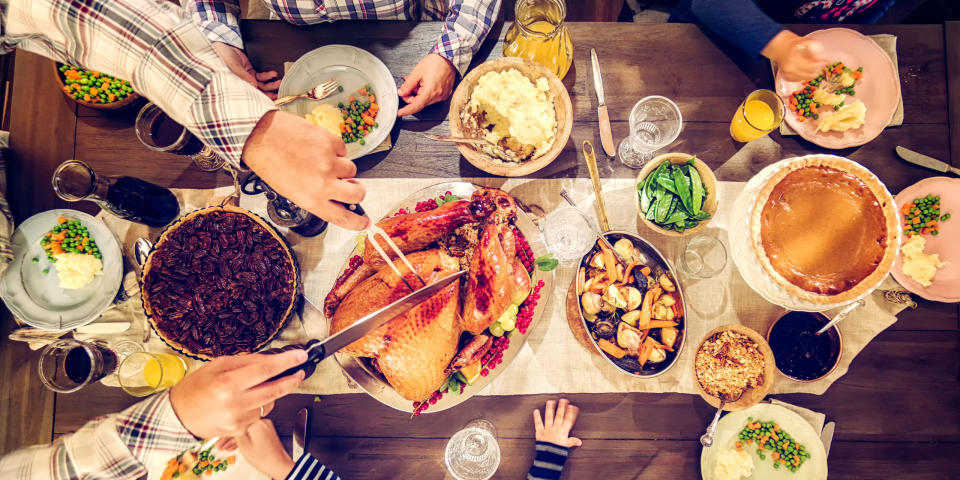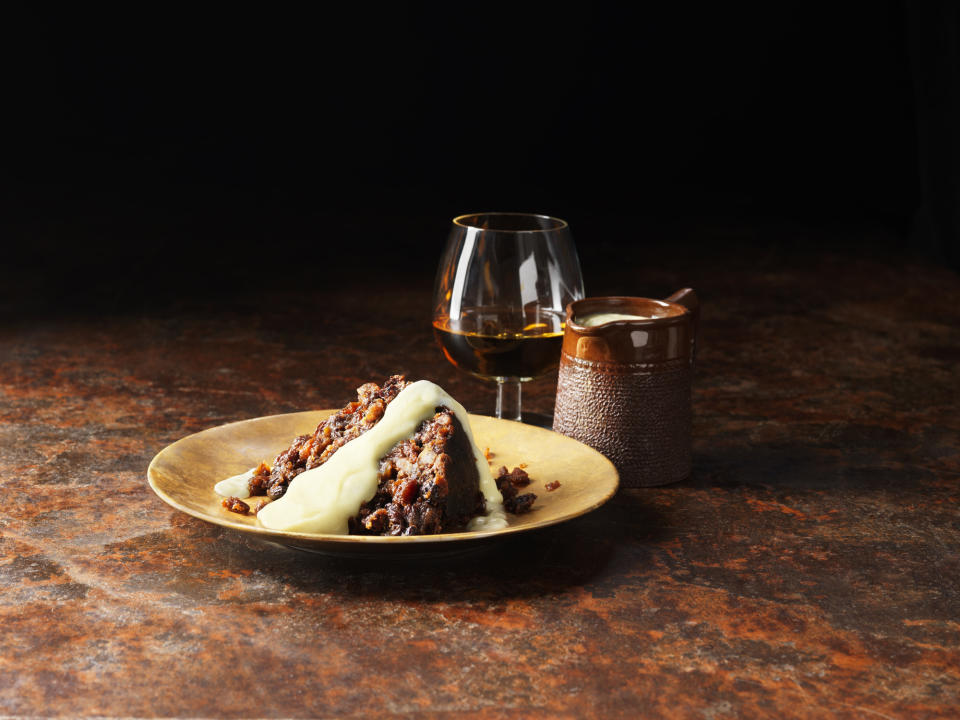This is how long you can keep your Christmas leftovers for

According to the Food Standards Agency (FSA), there are one million cases of food poisoning reported annually and two seasonal spikes during which numbers shoot up dramatically.
The first is over summer – think BBQs and salads left to simmer gently in the summer sun – and the second is Christmas, as we throw caution to the wind and stuff fridges full of leftovers and ignore use-by dates in our efforts not to waste food (or money). Poultry tops the list of offenders, courtesy of the campylobacter bacteria it can carry, with beef and lamb not far behind.
However, it's not just meat you need to treat with respect. Vegetables (including potatoes), rice, fruit, nuts and seeds also have the potential to make us ill, with fresh berries and bagged salads containing particularly nasty bugs (cyclospora and E.coli respectively, both of which can cause nasty stomach upsets). So tempting as it may be to throw berries that have gone a bit mushy into a smoothie, it's better to bin them. And that bag of slimy rocket? You know what to do…
What's the difference between use-by, sell-by or best before dates?
According to an FSA spokesperson, the term 'sell-by' doesn't actually exist in legislation. Instead, the organisation encourages the use of 'use by' and 'best before'.
Dr Edna Nyangale, scientific affairs manager at the Institute of Food Science and Technology (IFST), confirms this approach. 'The use-by date is concerned with food safety and is used on food items which, from a microbiological perspective, have a shorter shelf life, are highly perishable [go off quickly] and therefore may pose a risk to consumer health if eaten after this date. Food items on which use-by dates are used include fish, poultry, meats, dairy and some pre-packed cut salads.
"The 'best before' date is used for items where the quality of the product may not be at its best after the date – for example, bread may taste stale. However, as long as the storage conditions have been adhered too, items should be safe to eat."

Can I extend the use-by date by a couple of days as long as the packaging hasn't been opened?
The short answer is no. "The Food Standards Agency strongly recommends not consuming or freezing food after the use-by date as it may pose a risk of illness," says Dr Nyangale. "You shouldn't freeze it either, as freezing at this stage only acts to pause bacterial growth, not kill it. Freezing prior to the use by date is fine, on pack instructions often indicate how long the product can be stored for using this method."
Is the 'sniff test' a reliable way to tell whether food has gone off? In consumer research published by the Waste and Action Resources Programme (WRAP) in 2011, Cheddar cheese, milk and yoghurts are products that consumers said they would eat after the use by date if it looked and smelled OK. If you regularly take this approach, think again!
"Use-by dates are there for the safety of the consumer and this approach is not appropriate," says Dr Nyangale. "People probably are less cautious about foods where there is no 'off' smell or visible signs of spoilage; however this does not mean that the food will be safe to eat."
How are use-by dates calculated?
"These dates are calculated using shelf-life testing, which means the item is stored at the recommended conditions and tested regularly to monitor growth of any potentially harmful bacteria," says John Bassett, policy and scientific development director at the IFST. "This way, we can assess how long a product is safe for and confidently give a timeframe in which the item can be eaten without causing the consumer harm."
As a nation, do Brits tend to adhere to these dates or take a slightly cavalier approach?
Data published by WRAP found that 39% of consumers as 'date driven' and always keep an eye on dates at home, while 48% were 'date savvy' – in other words, had a general awareness of use-by dates.
"Although this data doesn't tell us about the numbers who eat foods after the use by dates, it does indicate an overall awareness of the importance of the date labels," says John Bassett.

Finally, what's the best way to store leftovers after Christmas?
"This really depends on what the leftovers are," says Dr Nyangale. "Foods like turkey and rice – i.e. high-risk foods – should be kept in the fridge and eaten within around two days. When reheating, you must make sure they're piping hot before you eat them."
And remember to allow food to cool sufficiently before putting it in the fridge, otherwise you run the risk of raising the temperature inside, creating a breeding ground for bacteria. Around two hours is plenty (don't leave it on the worktop – or in the oven – all night!)
Be careful with the cheeseboard
Surely the riper and runnier the better, no? Only as long as it's within the use-by date, especially if it's made with unpasteurised milk. That stinky star of the cheeseboard may harbour both listeria and E.coli, so while bring to room temperature before serving is fine, no more leaving it on top of the Aga for days on end…
Hate waste? Try these simple but effective leftover ideas…
Add vegetable stock to leftover veggies, such as potatoes, carrots and parsnips, and whizz up into a delicious soup
Stir fry turkey or beef with crunchy stir-fry veggies, garlic and chilli
Cube leftover ham and chicken and make into a pie (there's no shame in shop-bought pastry)
Freeze fresh berries in small portions and defrost as required
Slice and freeze cooked turkey to be used later for sandwiches or stir fries
You Might Also Like

